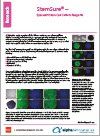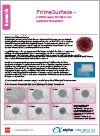Stem Cell Research
Stem cells are the body's raw materials from which all other cells with specialised functions are generated.
Under the right conditions in the body or a laboratory, stem cells divide to form more cells called daughter cells.
These daughter cells can differentiate and develop into cells with a more specific function, such as blood cells, brain cells, heart muscle cells or bone cells. No other cell in the body has the natural ability to generate new cell types.
There are two main types of stem cells: embryonic stem cells and adult stem cells. They serve as a repair system for the body.
Applications
Understanding Diseases
By watching stem cells mature into cells in bones, heart muscle, nerves, and other organs and tissue, researchers can better understand how diseases and conditions develop.
Regenerative Medicine
Stem cells can be guided into becoming specific cells that can be used to regenerate and repair diseased or damaged tissues.
Stem cell therapies can benefit those with spinal cord injuries, type 1 diabetes, Parkinson's disease, amyotrophic lateral sclerosis, Alzheimer's disease, heart disease, stroke, burns, cancer and osteoarthritis.
Stem cells may have the potential to be grown to become new tissue for use in transplant and regenerative medicine.
Pharmaceutical Safety and Effectiveness Testing
Before using investigational drugs in people, researchers can use some types of stem cells to test the drugs for safety and quality.
For the testing of new drugs to be accurate, the cells must be programmed to acquire properties of the type of cells targeted by the drug. For instance, nerve cells could be generated to test a new drug for a nerve disease. Tests could show whether the new drug had any effect on the cells and whether the cells were harmed.
Techniques Used
For stem cell research, some technologies are frequently used including stem cell culture, separation, and identification techniques. At present, fluorescence activated cell sorting (FACS) and magnetic activated cell sorting (MACS) are the common separation methods for stem cells.
Stem Cell Culture
Broadly speaking stem cells can be divided into two types – embryonic stem cells (ES) and adult stem cells.
ES cells are isolated from the inner cell mass of blastocysts and are pluripotent meaning that they can differentiate into all specialised cells. Adult stem cells act as a repair system.
Stem cells require specialised, high-quality media and expert culture techniques for propagation in the laboratory. Sub-optimal stem cell culture conditions can easily lead to unwanted stem cell differentiation or to cellular senescence.

Stem cell differentiation is triggered by various factors in vivo, some of which can be replicated in in vitro stem cell cultures. Some stem cell lines are immortal and can be cultured indefinitely, so it is imperative to select the right stem cell type for your research application.
Recent advances in the stem cell field have been due to the advent of CRISPR genome editing technology and 3D cell culture techniques. Advanced protocols such as those that generate organoids from induced pluripotent stem cells have provided scientists with more predictive in vitro “disease-in-a-dish” models.
The StemSure Reagent Range

Stem cell culture is a fine art and getting the optimal mix of factors to maintain Embryonic Stem cells (ES) or induced pluripotent Stem cells (iPS) in a healthy but undifferentiated state can be a challenge.
The StemSure reagent range, including Leukaemia inhibitory factor (LIF) and Monothiglyceriol, has been specifically created for use with sensitive stem cell cultures.
Each StemSure product has been tested by culturing mouse ES D3 strain cells and performing colony forming assessment and alkaline phosphatase staining in addition to the standard tests for sterility etc. on culture products.
PrimeSurface® Culture Ware
The PrimeSurface® range of culture ware was developed by the S-Bio division of the Sumitomo Bakelite Company to provide plastic culture vessels with low cell adhesion properties.
PrimeSurface products provide stable culture surfaces with a ultra-hydrophilic polymer coating containing a 'high density -OH group' which prevents elution of chemicals from the plate which can influence cell response and also promotes spontaneous spheroid formation within stem cell cultures.
PrimeSurface 96 Well plates are available with different well shapes to suit different applications.

Choose from U-, Conical or V- shaped wells. The well shape can influence spheroid body formation, cells with weaker aggregation properties such as the breast cancer cells MDA-MB-468 benefit from the V-shaped wells but other cultures will favour different well shapes for example mouse ES cell have been differentiated into cardiomyocytes using U-shaped wells (Yasuda et al, 2011*).
rBC2LCN Recombinant Lectins

BC2L-C is a soluble lectin expressed by the gram-negative bacteria Burkholderia cenocepacia. The N-terminal domain of this lectin (BC2LCN) binds exclusively to undifferentiated pluripotent stem (iPS) cells.
Wako’s recombinant BC2LCN (AiLecS1) has been shown to bind to a mucin-type O-glycan comprising an H type 3 structure on the protein podocalyxin1 .
Podocalyxin is a hyperglycosylated transmembrane protein highly expressed in human iPS and embryonic stem (ES) cells.
This recombinant lectin serves as an effective and specific ligand for detection of undifferentiated human embryonic stem(ES) and iPS cells in a range of applications.



